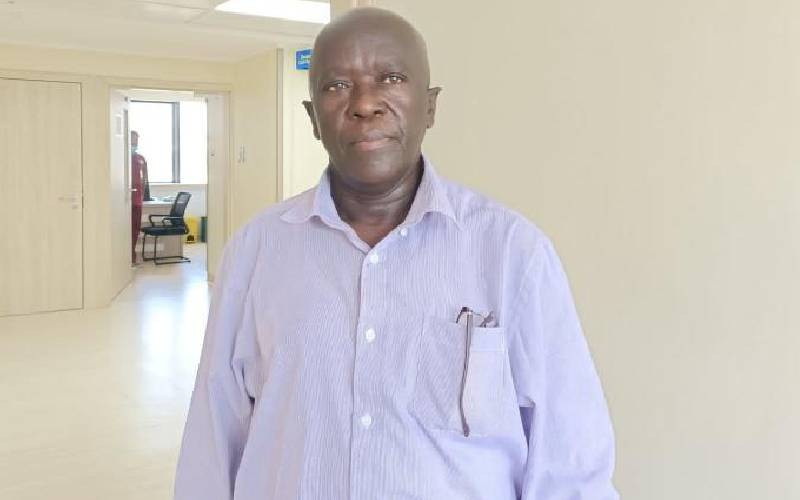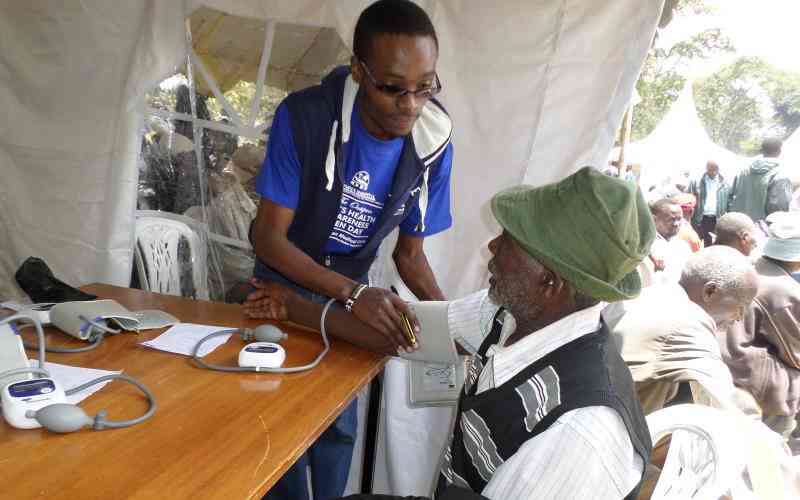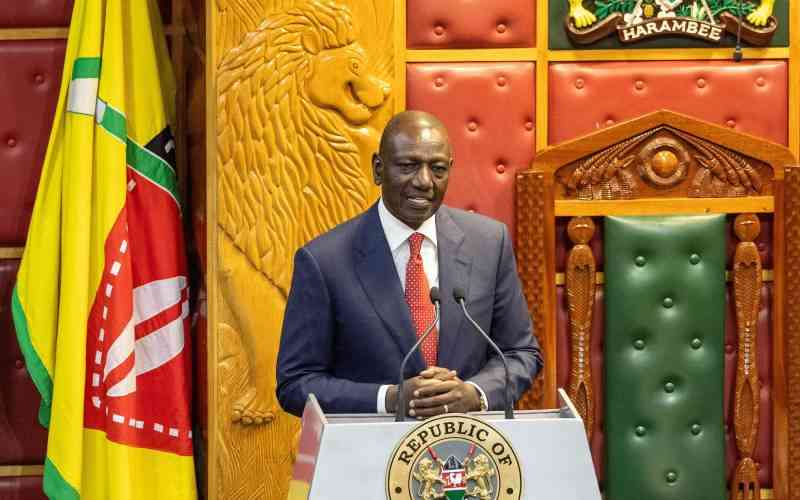
In April 2022, 57-year-old Martin Ngaruiya Gaitho started feeling severe pain in his lower back and around his ribs. He was rushed to the hospital and tests were done: urine tests and x-rays.
The experts saw spots on his back and the protein was high in his urine. Before further tests, they suspected either multiple myeloma (cancer of the plasma cells) or bone marrow cancer.
"They confirmed I had bone marrow cancer Stage 2 after they did the bone marrow aspiration, that is extracting of my bone marrow for lab tests," he says.
As expected, he was devastated, as was his family when he broke the news to them three days later.
Martin's wife Loice Ngaruiya, says that at first Martin, hid the results in his car, but when he eventually shared the news, they were devastated but believed he would be OK.
"My family thought the world had come to an end but they had to be strong," Martin narrates. At the time, he had no idea that a Bone Marrow Transplant (BMT) was an option.
"I started oral chemotherapy in June," he says. Then the doctor in charge told him about experts who were coming from India to perform bone marrow transplants. Since he was below 60 years old, he was eligible for one.
"I was very happy so I told him to include me on the list," Martin says. Even happier were members of his family who were able to stay close to him compared to if he had had the treatment in India.
"If we'd have had to go to India, I would definitely have gone with him," his wife Loise says. "But that would have meant that everything else would have come to a halt here in Kenya as we would have been away for almost 3 months. As much as he was in isolation after the transplant, people who love him were close by," she says.
"I finished the nine cycles of oral chemotherapy and then another two of injections. But my levels were still high so the transplant could not be done, so I took two more cycles of chemotherapy injections," he says.
When the levels went down, Martin was finally admitted on December 30 last year. The procedure was done on January 11 and he was discharged on January 24.
How was the transplant?
"It's not the biggest thing that you could wish on yourself, but they took care of me. You know, first, they have to destroy all the cells the good ones and bad ones. You can see the way my hands are black, the effects of high-dosage chemotherapy," Martin says rolling his sleeves and showing us his hands.
The side other effects were nausea. Low appetite, diarrhea, vomiting and feeling weak. He says he tried his best to feed on his own and not through the pipes.
"Whenever I felt like vomiting, I said put it in my mind that I would not," Martin says.
For 14 days after the transplant, he had to stay in isolation because his immunity was at zero.
"While in isolation, I had a special diet. For meat or chicken, no cooking fat. It was just boiled at a high. It was so soft, it would separate when you touched it. It was tasteless but I had to soldier on," he says.
No immunisation in his body
Almost one year after Martin first fell ill, the Health & Science team meets him and his wife at Nairobi West Hospital where he has come for a regular checkup and blood tests to check cancer levels. He is full of life and says he swore not to give up on himself even after being given the most heartbreaking news about his health.
At the moment Martin has no immunisation in his body -- from the BCG vaccine he received as an infant to prevent childhood Tuberculosis to the more recent Covid vaccines -- everything was cleared from his system by the transplant.
"My blood is very fresh, but I have to wait for 3-4 months to get BCG, because the chemo is still high. So I still avoid crowded places, I wear a mask all the time and I do not shake hands. But I feel okay," he says.
Dr Kibet Shikuku the chairperson of Kenya Hemophilia Association and Head of Medical Projects at Nairobi West Hospital says that a bone marrow transplant is a misnomer.
"When you hear 'transplant', the natural tendency is to think 'surgery'. However, it's far from it. Lately, we say 'hematopoietic stem cell transplantation'. We go to the bone and figure out medically how to stimulate what comes out and what is resident in the bone for utility as part of treatment," he says.
Previously, the experts would take a needle, take the patient to theatre, numb him/her a bit then they go into the marrow with a needle and aspirate/suck out the marrow and then refine the marrow to get the stem cells.
Lately, they use medication to stimulate the marrow to release the stem cells out of it so that it starts circulating in the normal blood vessels.
No longer aggressive
"Using technology, we can take the blood into equipment that spins the blood and creates layers, one of the layers is a stem cell layer but we have other cell layers. These are split and separated based on density. So I can choose to remove the stem cell layer and take it into a bag. The rest of the cells and any other fluid are taken back into the patient," he says
They stimulate using drugs and harvest using machines for subsequent storage. "It's no longer those aggressive processes that we used to apply before. We can actually transplant those cells that we have harvested in a bag through an infusion the way we would transfuse blood."
Dr Shikuku says that for a patient to be transplanted, they have to be put on medication that sterilises them. The drugs wipe out the patient's immunity.
The patient should be put in a highly sterilised environment where any form of infection cannot be given a chance to get to the patient.
"Such a facility is called a positive pressure facility. If you open this door and the pressure is low, air will flow inwards. If the pressure is high, air will flow outside. We want a scenario where the air in this room is at a higher pressure than the air outside so that anybody who comes from the outside does not allow infections to come inside. We want the air here to blow away anything you might be coming with," he says.
Dr Shikuku also says that they make sure the facility is checked and free of any organism that can cause harm to the patient. Usually, death is not as a result of the treatment but as a result of lowered immunity and infections setting in.
 The Standard Group Plc is a multi-media organization with investments in media platforms spanning newspaper print
operations, television, radio broadcasting, digital and online services. The Standard Group is recognized as a
leading multi-media house in Kenya with a key influence in matters of national and international interest.
The Standard Group Plc is a multi-media organization with investments in media platforms spanning newspaper print
operations, television, radio broadcasting, digital and online services. The Standard Group is recognized as a
leading multi-media house in Kenya with a key influence in matters of national and international interest.











